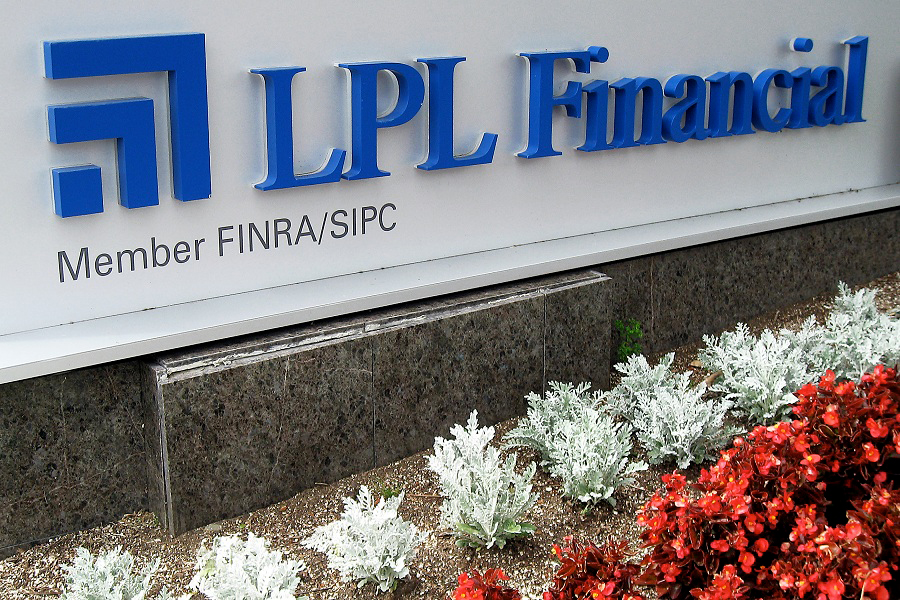

Bonds backed by LPL Financial Holdings Inc. got a boost last week when Moody's Investors Service upgraded the company's senior unsecured debt to investment grade from "junk." Separately, and days later, LPL said at its investor conference it will be making a push to work in the future with wealthier clients, who have long favored large Wall Street banks over independent broker-dealers.
Moody's on Nov. 14 gave LPL's senior unsecured debt the better rating -- to Baa3 from Ba2 -- while also confirming the investment grade status of LPL's senior secured debt, according to a research note.
LPL debt got the nod to investment grade due to its "consistent execution of a sound business and financial strategy that has contributed to its strong financial profile," according to Moody's, which praised its ability to lower its debt ratio, the company's overall growth strategy and its ability to benefit financially from current rising interest rates.
The brokerage industry, which sits on large amounts of client cash, benefits financially when interest rates rise. LPL Financial is a bellwether of sorts for the independent broker-dealer market. Ratings agencies also closely follow firms' debt ratios; the lower they are, the better the potential profitability of a company.
"Moody's also expects that LPL's financial profile will benefit substantially from rising interest rates, and that the firm's strong competitive position provides additional flexibility to weather cyclical downturns in financial markets and the possibility of lower interest rates in the future," according to Moody's. "LPL's scale and product offerings have expanded, driven by a combination of solid organic growth and acquired assets, helping to buffer the negative effects of the 2022 declines in equity and bond markets."
Separately, LPL Financial executives at its annual investor conference last Wednesday said they were going to focus more effort and resources on so-called private wealth advisers, who typically have a floor for clients of $5 million in assets. Long dominated by the wirehouses, the private wealth market requires independent broker-dealers to offer wealthy clients credit and lending facilities, including securities-based lines of credit.
"We will continue to build out our capabilities around alternative investments, banking and lending and, specifically, services in support of complex planning and long-range planning," said Rich Steinmeier, managing director, divisional president, business development, at the conference. "And as you put those together, those capabilities, we think, are exactly to the spot of what is needed to serve those high net worth segments. And as we progress, not only will we serve those high-net-worth folks who have some clients, but ultimately launch into the private wealth market."
Meanwhile, LPL continued this week to strike new business agreements to work with banks that offer retail brokerage services and house financial advisers under their roofs. On Tuesday, LPL said that Commerce Bank’s investment program, Commerce Financial Advisors, is joining LPL’s Institution Services platform. The team comprises nearly 30 advisors who serve $4.4 billion in brokerage and advisory assets.

Blue Anchor Capital Management and Pickett also purchased “highly aggressive and volatile” securities, according to the order.

Reshuffle provides strong indication of where the regulator's priorities now lie.

Goldman Sachs Asset Management report reveals sharpened focus on annuities.

Ahead of Father's Day, InvestmentNews speaks with Andrew Crowell.

Cerulli research finds nearly two-thirds of active retirement plan participants are unadvised, opening a potential engagement opportunity.
Barely a decade old, registered index-linked annuities have quickly surged in popularity, thanks to their unique blend of protection and growth potential—an appealing option for investors looking to chart a steadier course through today’s choppy market waters, says Myles Lambert, Brighthouse Financial.
How intelliflo aims to solve advisors' top tech headaches—without sacrificing the personal touch clients crave
